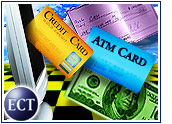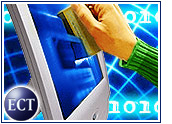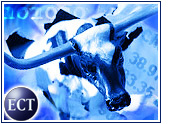
For online shoppers, making a purchase often seems relatively straightforward. Point and click, check the order, enter credit card information, and the transaction is a done deal. Authorization is delivered within seconds.
Behind the scenes, it is not so easy. Pushing that “Buy” button activates a complicated sequence of events that would seem mind-boggling to many consumers if they could peek beyond the curtain.
In the blink of an eye between an initiated buy and a completed sale, “money” passes through a staggering array of electronic hands. The way currency flows through the system depends on which form of payment a buyer uses and the level of security built in along the way.
Fraud Filter
Once a shopper gives the go-ahead for a purchase, the transaction request passes through a payment gateway provided by vendors such as Verisign Payment Systems.
At that point, the payment is examined by a fraud detection system, such as those produced by HNC and CyberSource, Meta Group senior program manager Gene Alvarez told the E-Commerce Times.
“It determines where the request is coming from and what time it is,” he said.
The fraud detection system raises red flags if it detects suspicious behavior. For example, Alvarez said, “a large order of diamonds at 4 a.m. in New York or a truckload of antivirus software bought by Iran” could sound the alarm.
Virtual Swipe
Fraud detection software also validates the shopper’s request and sends a request for credit card authorization.
“It’s like swiping a card at a store — it [ensures] that the card isn’t over balance or stolen,” Alvarez noted. “If it makes it through both of those checks, then the e-tailer can complete the transaction.”
In addition, a separate security system runs in tandem with the fraud detection process, ensuring the data that accompanies “the money” is securely transported.
The Path of PayPal
If a customer pays through a service like PayPal, the process is slightly different, according to PayPal spokesperson Julie Anderson. Shoppers click on the PayPal button on a customized merchant screen, then enter an e-mail address and click another button “to send money from [the buyer’s] PayPal account to the merchant’s.”
If the money is already in a buyer’s PayPal account, the system automatically confirms or verifies it, according to Anderson. “PayPal-to-PayPal is very easy,” she said.
If shoppers choose to use a credit card, the process — at least initially — is similar to any other credit card payment. The transaction undergoes fraud detection and validation and is authorized at the credit card company’s site.
The buyer’s account will show a PayPal transaction rather than the name of the merchant.
Long and Winding Road
But the monetary journey does not end with the completed transaction.
Either the merchant or a company like PayPal must interact with the shopper’s credit card company, which then must communicate with a bank to settle the transaction.
When the merchant submits a request for payment, “the issuing bank goes to the card network and will arrange for the issuer’s funds to be transferred to the merchant’s bank account,” Aaron McPherson, research manager at IDC eFinance, told the E-Commerce Times. That transfer is generally completed through nightly batch processing.
Leveling Obstacles
While the money trail is long and convoluted, it generally works seamlessly and quickly because technology has advanced sufficiently to remove many obstacles.
High-speed access and automated systems have eliminated much of the manual paperwork that used to litter the route. What is more, the financial services industry has had most of the necessary pieces in place for many years.
Still, online merchants lack at least one thing that their brick-and-mortar counterparts possess: protection from customers who renounce a purchase.
“The way the current [regulations] stand, if a merchant does not have a signature (virtually impossible in cyberspace) and the customer repudiates a purchase, they must be issued a chargeback,” McPherson said.
That problem may not plague e-tailers for long, though. Both Visa and MasterCard are pushing security systems that would offer online merchants a measure of protection against this risk, reducing the number of unnecessary chargebacks.
Keeping It Easy
More advances undoubtedly will aim to tame the money trail in the future. If Microsoft Passport becomes a full-fledged reality, for example, it could alter the payment process. Other as-yet-unknown technologies also are likely to influence the online payment landscape.
No matter what advances lie ahead, however, the ultimate goal will remain the same: to ensure that online shoppers can order items with ease and walk away from the computer with their purchases — at least figuratively speaking — in the bag.















































Social Media
See all Social Media